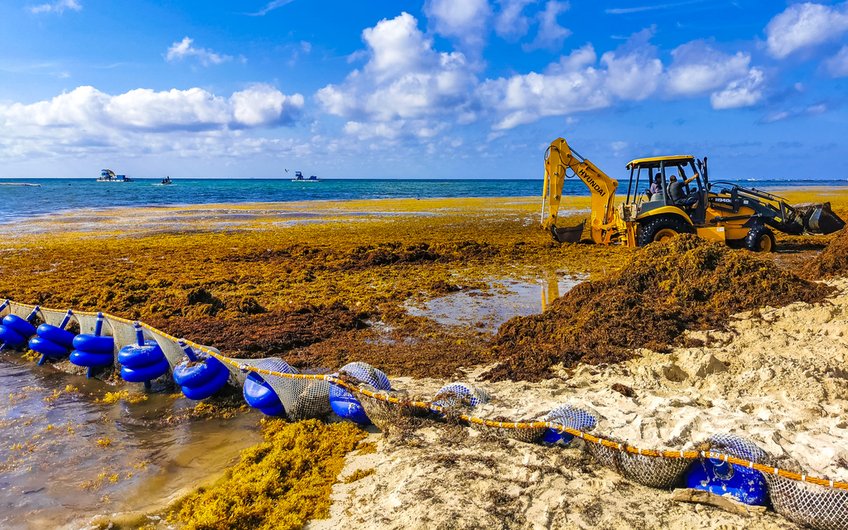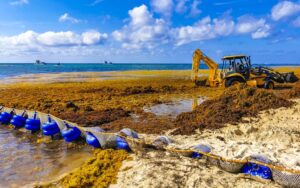
Significant blooms of Sargassum algae, a brown seaweed, have been increasingly affecting coastlines across the Caribbean and parts of the Gulf of Mexico, particularly during the summer months. A recent study conducted by researchers at the Max Planck Institute for Chemistry has uncovered the mechanisms driving these algal blooms, highlighting the role of nutrient dynamics in the ocean.
By June 2023, approximately 38 million tons of Sargassum were drifting towards Caribbean islands, the Gulf of Mexico, and northern South America, marking a record high. The accumulation of this algae on beaches leads to unpleasant odors as it decomposes, which can deter tourists and pose risks to local ecosystems. While Sargassum serves as a critical habitat and food source for various marine species, its excessive growth creates challenges for coastal communities, which often resort to mechanical removal to maintain beach access.
Understanding the Bloom Mechanism
The study published in Nature Geoscience reveals that strong wind-driven upwelling in the equatorial region plays a crucial role in transporting phosphorus-rich deep water to the surface. This process enhances the growth of cyanobacteria that live symbiotically on Sargassum, which can fix atmospheric nitrogen and provide it as a nutrient source for the algae. This relationship gives Sargassum a competitive edge over other types of algae in the region.
Researchers had previously speculated that nutrient runoff from agriculture and deforestation might be contributing to the increased biomass of Sargassum. However, these theories failed to account for the substantial growth observed in recent years. By analyzing coral drill cores from various Caribbean locations, the research team was able to establish a direct link between the upwelling of phosphorus, nitrogen fixation, and the growth of Sargassum.
PhD student Jonathan Jung, the study’s lead author, noted that the team observed significant increases in nitrogen fixation during 2015 and 2018, years that coincided with record Sargassum blooms. “We compared our coral reconstruction with annual Sargassum biomass data, and the two records aligned perfectly,” said Jung. This correlation suggests a strong connection between nutrient availability and algal growth.
Coral Cores as Climate Archives
The research utilized coral cores, which serve as natural archives that record chemical signatures from the ocean. By examining the nitrogen isotopic composition of these coral layers, the team reconstructed historical nitrogen fixation rates over the past 120 years. This analysis indicated that periods of low ratios of stable nitrogen isotopes correlate with times of high nitrogen fixation, further establishing the link between these processes.
The findings also shed light on how climatic conditions influence algal blooms. Variations in sea surface temperatures across the tropical North Atlantic can lead to changes in air pressure, resulting in wind anomalies that drive nutrient-rich water from the depths to the surface. The researchers assert that monitoring these climatic factors could enhance predictions of future Sargassum growth events.
Alfredo Martínez-García, a senior author and group leader at the Max Planck Institute, emphasized the implications of this research in understanding the future of Sargassum in the Atlantic. “Ultimately, the future of Sargassum in the tropical Atlantic will depend upon how global warming affects the processes that drive the supply of excess phosphorus to the equatorial Atlantic,” he stated.
As the research team plans to investigate additional coral records from various Caribbean locations, they aim to provide further insights that could help mitigate the impacts of Sargassum blooms on coastal communities and marine ecosystems. The study not only clarifies the dynamics behind these algal blooms but also highlights the interconnectedness of climate factors and ocean health.







